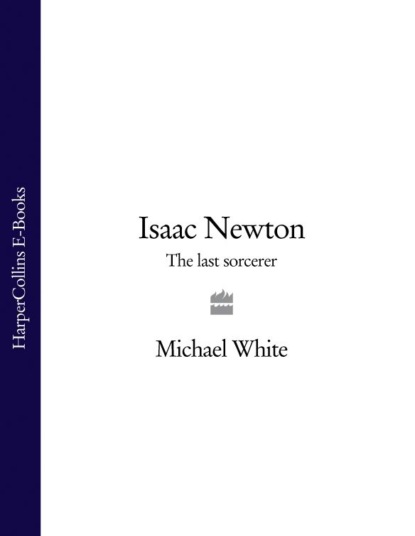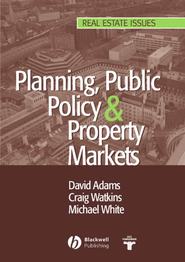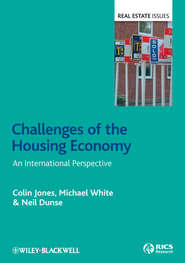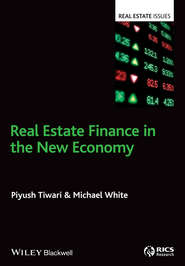По всем вопросам обращайтесь на: info@litportal.ru
(©) 2003-2024.
✖
Isaac Newton: The Last Sorcerer
Настройки чтения
Размер шрифта
Высота строк
Поля
(#litres_trial_promo)
For all the attempts that have been made to find clues in the meagre correspondence between the two men, the strongest evidence for an acrimonious break lies in the fact that Wickins neither wrote a word about Newton nor related more than a scrap of anecdote about their time together. When, soon after Newton’s death in 1727, Robert Smith, Plumian Professor of Natural History at Cambridge, wrote to Nicholas Wickins requesting information about his father, he was told that John Wickins had long considered collecting together everything in his possession related to Newton but had done nothing about it. This would not have been a difficult task, because all Nicholas Wickins could pass on to Smith were three short letters transcribed into a notebook, five other notes concerning mundane financial matters, and the anecdote describing their first meeting.
Fortunately, much more is known of Newton’s academic life as an undergraduate. As at other great seats of learning throughout Europe, the curriculum at Cambridge was based almost exclusively upon the teachings of the Greek masters – especially the ideas of Aristotle, with which Newton would already have been familiar from his reading at the Clarks’. Throughout his first year he attended his lectures conscientiously, but he was already beginning to question the validity of classical ideas.
Like many of the more conscientious students, he had been following the latest philosophical developments and was reading ‘fashionable’ philosophers, such as Descartes and Galileo, whose works were gradually becoming available in England. As a result, sometime in early 1663, Newton underwent a radical change of approach. During a lecture, while making meticulous notes on Aristotle’s teachings, mid-page he stopped abruptly. Then, after leaving dozens of pages blank, he wrote at the top of a fresh page, ‘Quaestiones Quaedam Philosophicae’ – ‘Some Problems in Philosophy’. Beneath this he wrote, ‘Amicus Plato, amicus Aristoteles magis amica veritas’ – ‘I am a friend of Plato, I am a friend of Aristotle, but truth is my greater friend.’
(#litres_trial_promo)
This collection of ‘Quaestiones’ – or the Philosophical Notebook, as it is sometimes called – marks the point at which Newton stepped away from tradition and began to question what he was taught. He began by creating forty-five headings in the notebook – topics concerning the nature of the universe which he would attempt to investigate and answer. These included ‘Of Water and Salt’, ‘Attraction Magnetical’, ‘Of the Sun Stars & Planets & Comets’ and ‘Of Gravity & Levity’. In some cases nothing has been written under the heading, but elsewhere there is a paragraph or two of neatly written text, while some headings are followed by lengthy discourses.
Like his schoolboy exercise books, these undergraduate notebooks contain questions and attempts at answers taken from the works of well-known natural philosophers. In many places the arguments are then dissected and questioned further. Sometimes a section of text is followed by a piece composed by Newton in which he seems to be addressing the quoted author and asking him questions directly or drawing attention to things that do not appear clear. In this way, Descartes and Boyle come under scrutiny along with the antiquated philosophies of Aristotle.
An example is a piece under the heading ‘Of Water and Salt’ which involves an early hypothesis to explain the ebb and flow of the sea, later explained by Newton in Proposition XXIV of Book II of the Principia, first published some twenty-four years later:
To discover whether the Moon pressing the atmosphere causes the flux of the sea, take a tube of about 30 inches filled with quicksilver or else take a tube with water which is so much longer than 30 inches as the quicksilver is weightier than water & the top being stopped the liquor will sink 3 or 4 inches below it leaving a vacuum (perhaps). Then, as the air is more or less pressed without by the Moon so will the water rise or fall as it does in a weatherglass by heat or cold.
(#litres_trial_promo)
At this stage of his career Newton could offer no explanation for this, but he analyses it in terms of what others say. Can the movement of the quicksilver be explained by the theories of Aristotle, who would declare that the substance is merely trying to find its place in the world? Or is Descartes closer to the truth: is the rise and fall of the surface of the quicksilver due to the movement of particles and ether bearing down upon it, creating vortices within the liquid?
Elsewhere there are speculations based upon thought experiments. Under the heading ‘Of Gravity & Levity’ Newton wrote:
Try to discover whether the weight of a body may be altered by heat or cold, by dilatation or condensation, beating, powdering, transferring to several places or several heights, or placing a hot or heavy body over it or under it or by magnetism, whether lead or its dust spread abroad, whether a plate flat-ways or edgeways is heaviest.
(#litres_trial_promo)
Although these inquiries seem to us to have obvious answers (why, for example, should an object weigh different amounts if it is laid flat or edgeways?), no one before Newton had recorded their efforts to verify these things. Rather than accepting tradition, Newton wanted to clarify such matters for himself.
He acquired some of these notions from books available in the extensive library at Trinity College, which contained works by the great natural philosophers of the day. Here could be found texts by Descartes, Boyle, Thomas More, Hobbes, Copernicus, Tycho Brahe and Galileo (with the exception of Galileo’s two most important works, Dialogue Concerning the Two Chief World Systems and Dialogue Concerning Two New Sciences, both of which appear to have been too risqué for the conservative thinkers who authorised the purchase of books for the library). The problem for Newton was not the range of material to be found in Cambridge university libraries: it was that students could use the libraries only at special times, and then only when supervised by a tutor. From what we know of Newton’s tutor, Pulleyn, who was usually unavailable and quite uninterested in natural philosophy, it would seem most likely that Newton gained access to these all-important works through the agency of another fellow, almost certainly Humphrey Babington.
Although at first inspired and influenced by Descartes, Newton quickly rejected the Frenchman’s mechanical theory as a concept that denied the omnipotence of the Creator. He was able to accept Pierre Gassendi’s Christianised atomism, but even this was with reservations. In the ‘Quaestiones’ he wrote:
Of Atoms
It remains therefore that the first matter must be atoms and that matter may be so small as to be indiscernible. The excellent Dr More [the Cambridge fellow Henry More] in his book of the soul’s immortality has proved this beyond all controversy, yet I shall use one argument to show that it cannot be divisible in infinitum & that is this: Nothing can be divided into more parts than it can possibly be constituted of. But matter (i.e. finite) cannot be constituted of infinite parts.
(#litres_trial_promo)
Newton is here using logic to dispel the possibility of anyone taking the atomic theory too far. Matter being a finite thing, it cannot, he reasoned, be divided forever into infinitesimally small parts. (If Newton sounds overconfident here and seems to be treating the issue with the same overzealousness that Aristotle might have employed, we can perhaps put it down to his relative youth. These were, after all, musings in a private notebook.)
The key influence in guiding Newton towards a view of the universe that maintained a supreme role for the Creator was the Cambridge philosopher Henry More, a man who was interested in all areas of natural philosophy and mysticism and a leading member of the group of fellows known as the Cambridge Platonists.
Born a gentleman, More had gained the finest education at Eton and was elected a fellow of Christ’s College in 1639. Believing in the pursuit of knowledge as a means of exalting God, and upholding the Scholastics’ edict ‘Understand so that you may believe, believe so that you may understand’, More declined all offers of ecclesiastical positions and even the mastership of Christ’s College in order to lead an academic life unhindered by other responsibilities.
He and the other Cambridge Platonists believed that the world was permeated by spirit, which More termed the ‘Spirit of Nature’. This esoteric ‘force’, he believed, mediated between God – who controlled all actions, all purpose and all outcomes – and a purely mechanical universe – the mundane physical world in which we live and conduct our lives.
As a young scholar, More had shared many of Descartes’s ideas and had initially seen Cartesian philosophy as a means of reconciling theology and natural philosophy; but gradually he had turned away from this view, later becoming its vehement opponent. At the root of More’s ideology, and of his influence on Newton, was an amalgamation of atomism and Christian Platonism. Plato had believed in the notion of spirit, an essence within all things, manifest in man as the soul, but also an extension of God, a force at work in Nature, guiding the universe. In Descartes’s philosophy there appeared to be no continuing need for God. Descartes never intended this interpretation and was himself a devout Christian, but to More, and later to Newton, the mechanisms and ideas portrayed in Descartes’s Discourse on the Method and Principles of Philosophy could easily be interpreted as atheistic. In More’s universe, matter was guided by spirit, manipulated by God entirely at his discretion.
More, who was born in Grantham, had tutored Joseph Clark (the brother of Clark the apothecary) at Cambridge. He visited Grantham occasionally, and it is possible that he may thus have met Newton several years before the young man entered university. It is clear from entries in his philosophical notebook that Newton came under More’s influence quite early in his university career. As well as the mention of a text by ‘the excellent Dr More’ in his notes on atomism, Newton has listed headings clearly influenced by More’s main areas of interest, such as ‘Of the Creation’, ‘Of the Soule’ and ‘Of God’.
(#litres_trial_promo) These may have been prompted by Newton’s natural curiosity for things spiritual, but it is also likely that they stemmed from reading More’s most important book, The Immortality of the Soul, to which Newton had referred in the earlier entry ‘Of Atoms’.
More’s influence upon Newton extended beyond the inspiration provided by his writings.
(#litres_trial_promo) Newton’s ideas and loyalties changed so radically within such a short period of time during his second year at university that the influence of at least one academic guide is likely. Having been Clark’s tutor and an associate of Babington, More probably talked to Newton on a number of occasions during the young man’s final years in Grantham and Woolsthorpe and may even have singled him out upon his entry into the university. He was another father-figure within the academic and social network forming around the serious-minded and inquisitive young man. Although Babington was more of a practical guide (and almost certainly provided access to his private library), he was in Cambridge only rarely. More provided a greater and more lasting intellectual foundation.
But, if More’s influence was strong, to the modern mind he seems to have offered a confusing philosophy. To us, atomism is the foundation of modern physics, but the seminal work of Rutherford, who first postulated the existence of smaller particles within the atom, early in the twentieth century, led to the oddities of quantum theory. From this derives indeterminism, as expressed in Heisenberg’s Uncertainty Principle, leading to theories of unpredictability and a philosophical viewpoint far removed from the image of a universe manipulated by a benign God. Though some have managed to visualise and have faith in a strange marriage between quantum theory and God, mainstream modern atomism could not be further removed from More’s idea of a personal, all-pervading deity. Yet, to More – naturally unaware of where it would one day lead – atomism was a way of proving the actions of an omnipresent Creator, a confirmation of the Testaments; because, as Newton had underscored in his notebook, matter could be divided only to a finite degree, and the resulting fundamental particles must have been created and guided by a divine hand.
If More offered a theoretical foundation which combined natural philosophy with theology, from reading Galileo and Bacon contemporaneously Newton had also learned how to construct a working system with which to verify his ideas. By the summer of 1664 he was able to state in his notebook that ‘The nature of things is more securely and naturally deduced from their operations one upon another than upon the senses. And when by the former experiments we have found the nature of bodies … we may more clearly find the nature of the senses.’
(#litres_trial_promo) What he means by this is that scientists cannot simply trust what they observe with their senses, but need to experiment before attempting to deduce the nature of the universe and the objects that fill it – that there may be more going on than we know from the information our senses give us by superficial observation.
Newton’s first experiments, begun during the summer of 1664, were probably his investigations into the nature of light. Years later these appeared in the Opticks, first published in 1704.
His earliest interest in light began when he bought a glass prism at the Stourbridge fair, held on a piece of land beside the river about a mile from the centre of Cambridge. Amid stages for the jugglers and clowns, minstrels and children’s games, dancers and actors stood stalls selling all manner of oddities – trinkets from exotic travels in Bohemia, potions and elixirs, and toys. It was from such a stall that Newton purchased his prism.
According to Conduitt, ‘In August 1665, Sir I. bought a prism at Stourbridge fair to try some experiments upon Descartes’s books of colours.’
(#litres_trial_promo) However, on this occasion Conduitt got his dates wrong and Newton actually acquired the prism on his visit to the fair in 1664, not 1665. Plague prevented the holding of the fair in 1665 – a fact documented in the diary of Alderman (later Mayor) Samuel Newton (no relation): ‘On the first of September, a proclamation was posted prohibiting Stourbridge fair on account of the great plague in London.’
(#litres_trial_promo) It is also agreed by most authorities that, because of the plague, Newton had left Cambridge to return to Woolsthorpe before the beginning of August 1665, and was absent from the university for most of the next two years.
(#litres_trial_promo)
The prevailing hypothesis of light at the time was that of Descartes. He believed that light was a ‘pressure’ transmitted through the transparent medium of the ether. Sight, he claimed, was due to this pressure impinging upon the optic nerve.
Newton was acquainted with this hypothesis and had already made notes on the subject in his philosophical notebook. But it is likely that, in keeping with his support for atomism, by the summer of 1664 he was beginning to doubt the accuracy of Descartes’s explanation. He was already thinking that light might be corpuscular, and by imagining light to be particle-like he was more readily able to explain phenomena such as reflection, refraction, and optical and chromatic distortions. Writing to Henry Oldenburg, the Secretary of the Royal Society, some eight years later, Newton described his earliest experiments with the prism:
I procured me a triangular glass-prism, to try therewith the celebrated Phenomena of Colours. And in order thereto having darkened my chamber, and made a small hole in my window-shuts, to let in a convenient quantity of the sun’s light, I placed my prism at its entrance, that it might be thereby refracted to the opposite wall. It was at first a very pleasing divertissement, to view the vivid and intense colours produced thereby …
(#litres_trial_promo)
With the prism he was able to demonstrate how white light is composed of a range of component colours and how it can be split into the colours of the spectrum, with blue light, at one end of the spectrum, being bent (or refracted) more markedly than red light, at the other end. Furthermore, he was able to judge – correctly – that the colour of an object depends upon which part of the spectrum is absorbed by it and which part reflected. ‘Hence redness, yellowness etc.,’ he wrote, ‘are made in bodies by stopping the slowly moved rays without much hindering of the motion of the swifter rays, & blue, green & purple by diminishing the motion of the swifter rays & not of the slower.’
(#litres_trial_promo)
In short, an object will look red if the other colours (what Newton refers to as ‘the slowly moved rays’) are absorbed by it more than is red light. The red will then be reflected back much more than the other colours. In the same way, an object will appear blue because it reflects blue more than the other colours (those that Newton called ‘the swifter rays’). The ability to absorb or reflect different parts of the spectrum depends on the nature of the object and produces the rich diversity of colour that we observe in the universe.
(#litres_trial_promo)
Following this discovery, Newton copied out an extract from Descartes’s Dioptricks and wrote after it:
Of Light
Light cannot be by pressure for we should see in the night as well or better than in the day we should see a bright light above us because we are pressed downwards … there could be no refraction since the same matter cannot press 2 ways, the Sun could not be quite eclipsed, the Moon & planets would shine like suns. A man going or running would see in the night …
(#litres_trial_promo)









